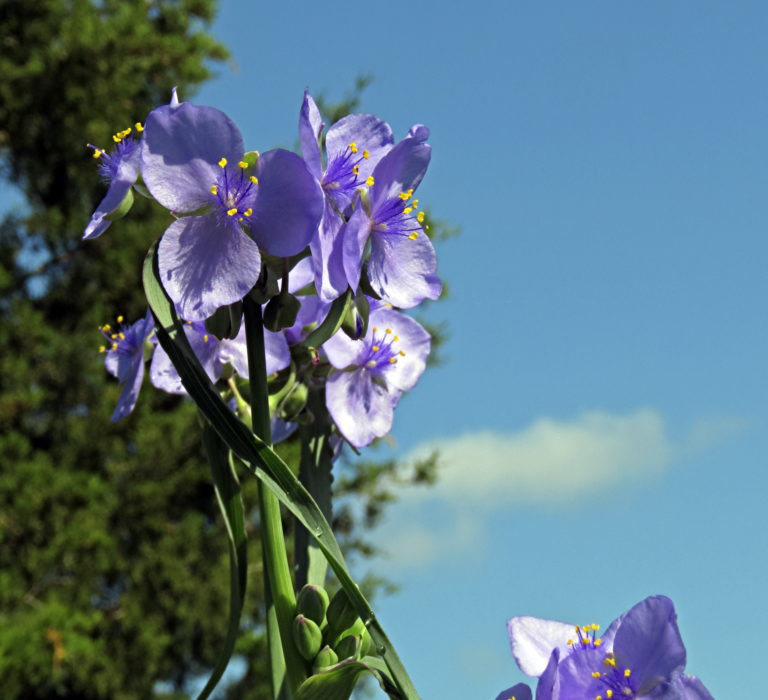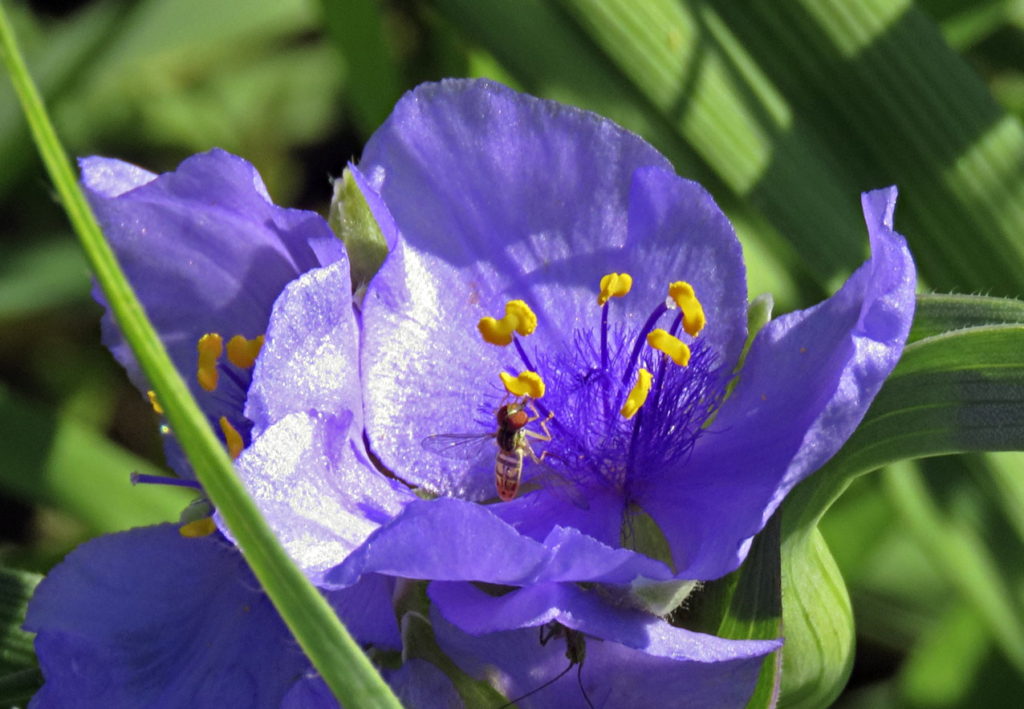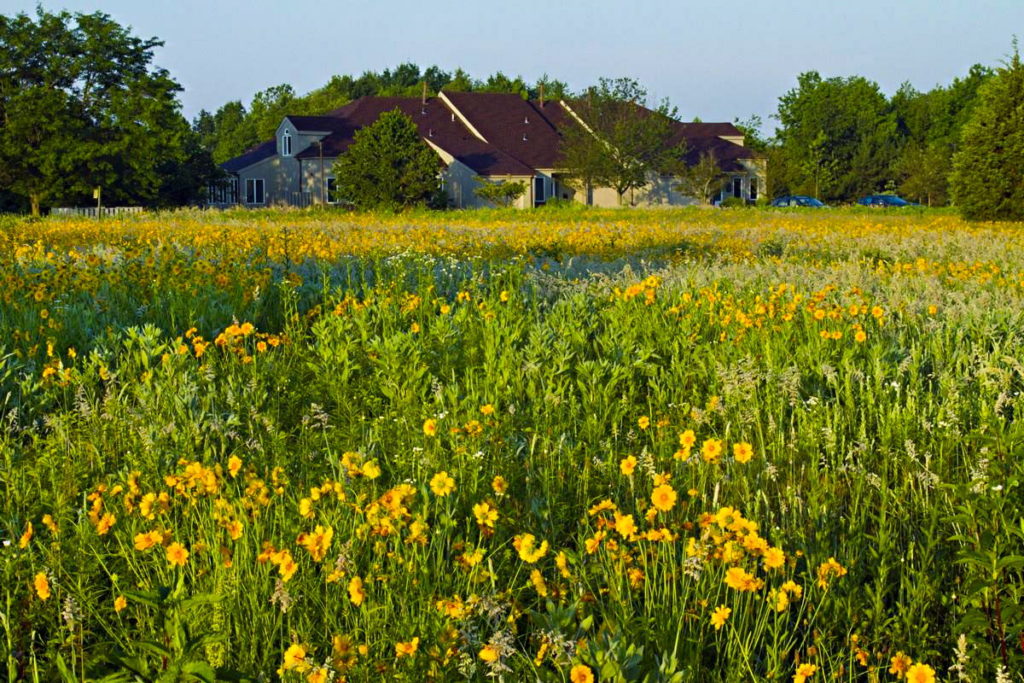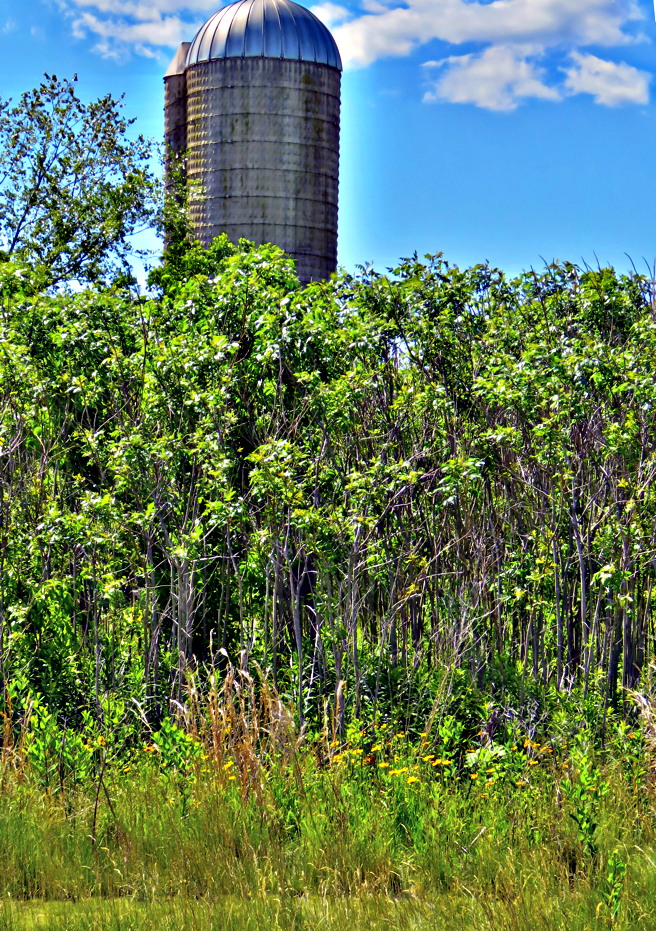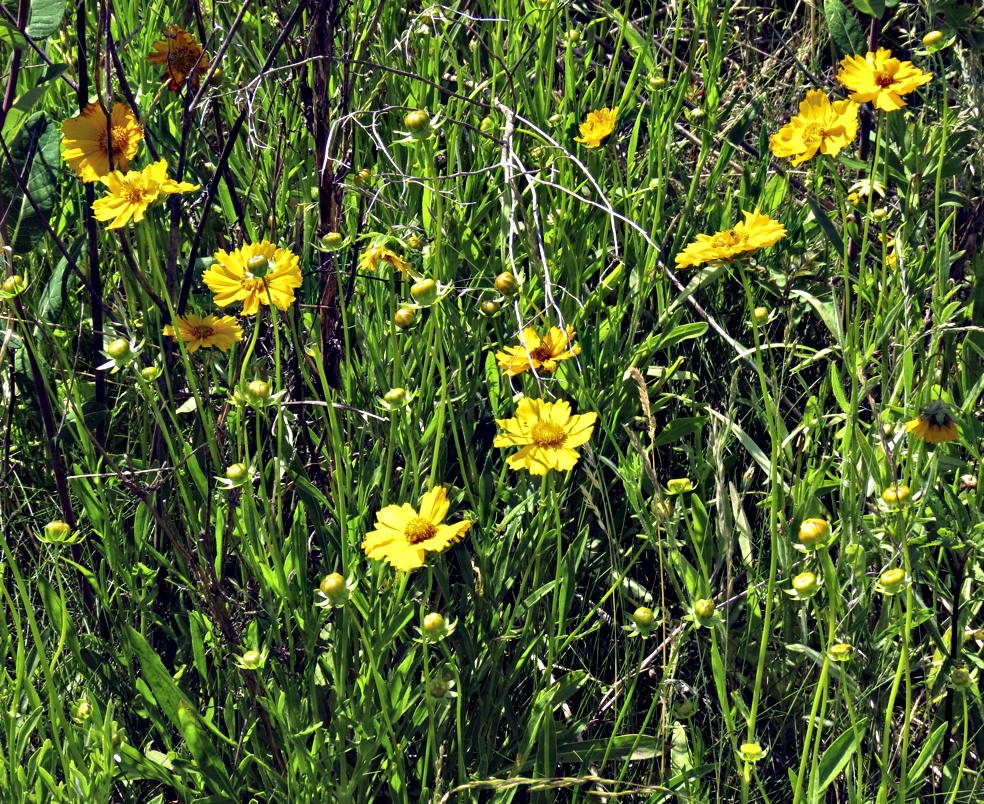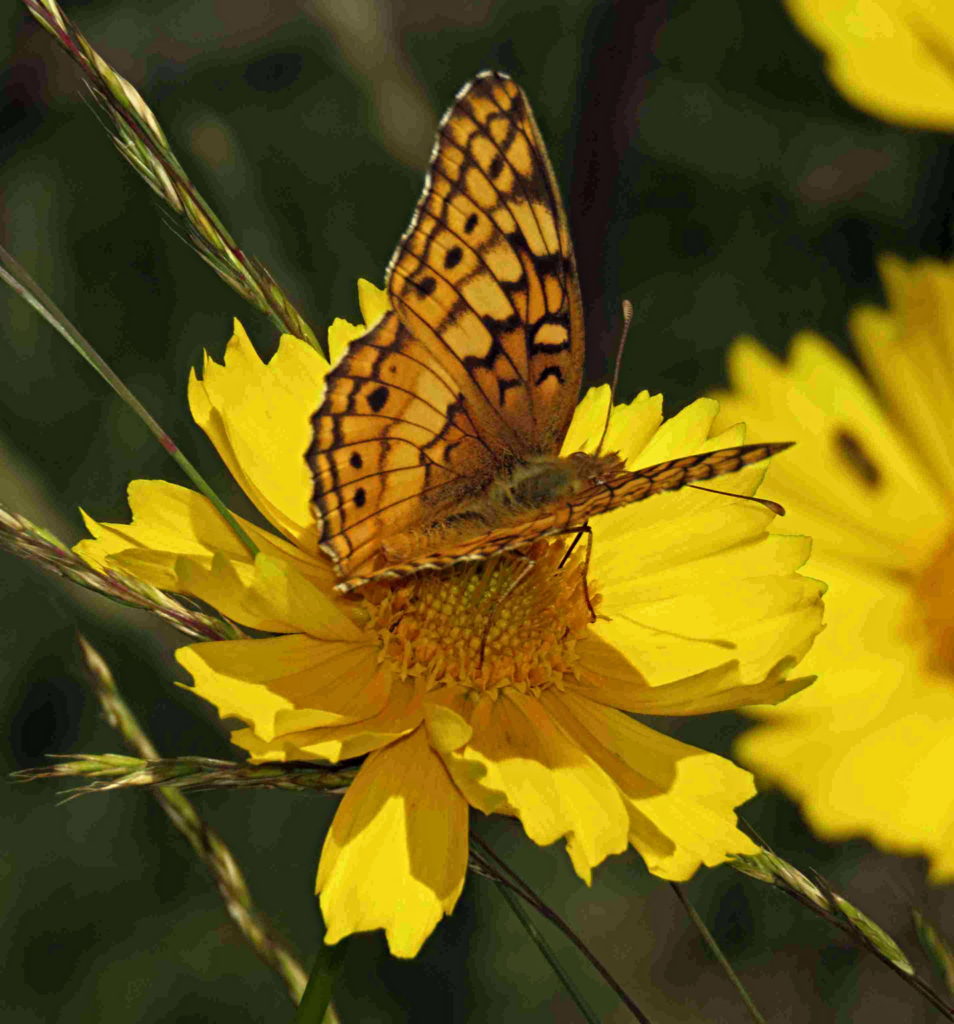Text and photographs by Fred Kahan
In the last week in May the meadows on either side of Estaugh Way were lined with pretty blue flowers atop knee-high stalks. This species, a variety of Tradescantia, was introduced within staked areas last year.
Alas, the rains over the Memorial Day weekend have beaten them down, but I‘m sure they’ll revive. I assume it is the central States ohiensis species, rather than the sometimes unwelcome but more common virginiana, whose unattractive common name is Spiderwort.
The bright blue filaments of the stamens the hover-fly clings to are decorated with very fine hairs that have long been the subject of introductory college Botany courses.
These hairs are only one cell in diameter and are transparent. Visible under a microscope is cytoplasmic streaming, bearing a traffic of organelles around a purple central vacuole. In recent decades it has been established that this active cellular process is driven by proteins similar to those found in muscle. These proteins have counterparts throughout the Kingdom of animals and plants, whether they visibly move or appear stationary.
The above area is shown on trail maps as the “Native Plants Area.” The last time an article in these archives showed this abundance of golden daisies was 6 years ago in June. They are Lance-leaved Coreopsis (C. lanceolata.)
The last accessible place where Coreopsis in numbers could be found during the past two years is sheltered by a copse of Sumac on Y17 in the “Great Meadow.” This species is scheduled to be reseeded in the restoration plan for the meadows and will be a welcome sight.
The Variegated Fritillary butterfly is found from early Spring to Fall in the meadows. Like several other butterfly species observed there, its true breeding grounds are in southern states. This species‘ caterpillars feed on passion vines and violets.
While “Coreopsis” rolls off the tongue grandly, and this flower in Floriography connotes “Be cheerful,” the genus name is derived from the Greek word for “bug-like!” Indeed its common name, “Tickseed Daisy” is inspired by the shape of the seed. Even worse, in Japan, where it has following introduction become a major pest, it is named “Bedbug Flower.” What a downer!

